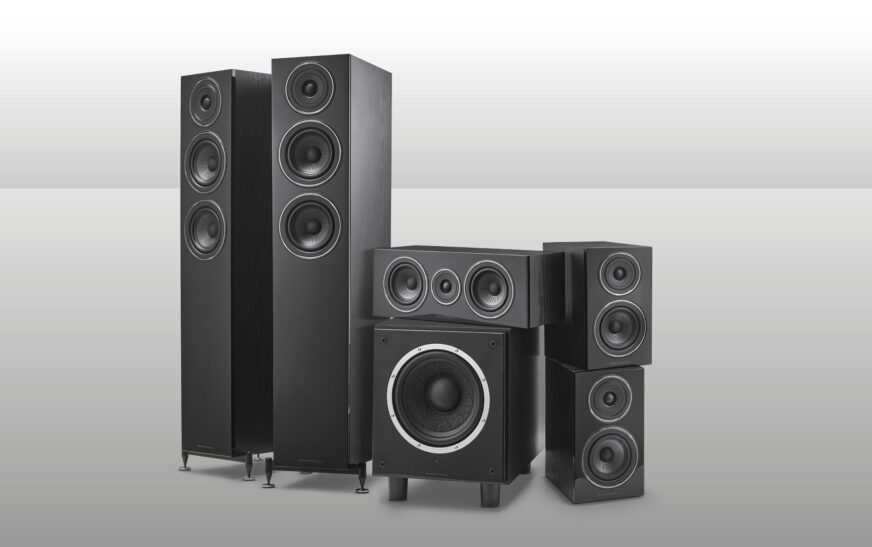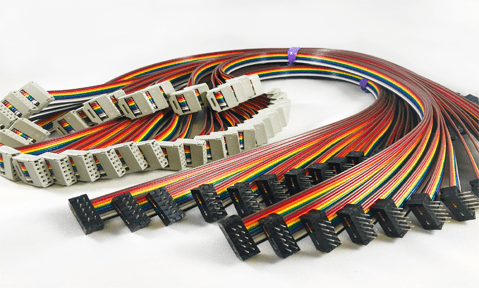Speakers play a crucial role in audio systems by converting electrical signals into sound waves that enhance our enjoyment of music, films, and various forms of media. The journey of speakers has progressed from basic sound reproduction methods to the sophisticated technology found in modern high-fidelity audio systems. This article explores the historical development, technological advancements, various types, benefits, drawbacks, and emerging trends related to speakers, offering an in-depth insight into their significance in audio reproduction.
1. The History of Speakers

1. Early Innovations
The origins of speaker technology can be traced back to the late 19th century, when pioneers such as Alexander Graham Bell and Thomas Edison began their explorations into sound reproduction. In 1925, a significant milestone was achieved with the creation of the first practical loudspeaker, developed by a team of engineers under the leadership of Edwin Howard Armstrong. This innovative electromagnetic loudspeaker employed a moving coil mechanism to transform electrical signals into audible sound, establishing the foundation for contemporary speaker technology.
2. Advancements Through the Decades
Throughout the years, speaker technology has experienced numerous advancements:
1940s: The advent of cone speakers marked a pivotal change in audio reproduction, enhancing sound quality and fidelity.
1960s: The introduction of stereo sound systems represented a major leap forward, facilitating two-channel audio that offered a more immersive listening experience.
1980s and 1990s: The emergence of home theater systems and personal audio devices spurred further innovations, including surround sound speakers and compact designs tailored for smaller living environments.
3. The Digital Revolution
The onset of the 21st century heralded the digital age, profoundly influencing audio consumption. The rise of digital audio formats and streaming services transformed the music industry, creating a heightened demand for high-quality speakers capable of delivering superior sound. This period also witnessed the rise of wireless speakers, which significantly improved convenience and accessibility.
2. Understanding Speaker Technology

To understand the operation of speakers, it is crucial to grasp the essential technologies and components that contribute to sound reproduction.
a. Fundamental Components of a Speaker
Speakers are composed of several vital elements that collaborate to generate sound:
Driver: The driver serves as the main element responsible for sound production. It generally includes a diaphragm, voice coil, and magnet. When an electrical signal flows through the voice coil, it generates a magnetic field that moves the diaphragm, thereby creating sound waves.
Enclosure: The enclosure of the speaker contains the driver and significantly impacts sound quality. Various enclosure designs (such as sealed or ported) affect the speaker’s performance, influencing aspects like bass response and overall sound projection.
Crossover: In speakers with multiple drivers, a crossover network allocates different frequency ranges to the appropriate drivers (woofers for low frequencies and tweeters for high frequencies), ensuring a well-balanced sound output.
b. Varieties of Drivers
Speakers may incorporate different types of drivers, each tailored to manage specific frequency ranges:
Woofers: Designed for low-frequency sounds (bass), woofers typically feature larger diaphragms to produce deep and resonant audio.
Tweeters: Tweeters are responsible for high-frequency sounds (treble) and are smaller than woofers. They enhance clarity and detail in the sound.
Midrange Drivers: These drivers address the mid-frequency range, which is vital for reproducing vocals and many musical instruments.
c. Impedance and Sensitivity
Two important specifications to consider when assessing speakers are impedance and sensitivity:
Impedance: Expressed in ohms, impedance reflects the resistance a speaker presents to electrical current. Common impedance ratings include 4, 6, and 8 ohms. Impedance influences the compatibility of the speaker with amplifiers and its overall performance.
Sensitivity: Sensitivity indicates how effectively a speaker converts power into sound. Typically measured in decibels (dB), it reveals how loud a speaker can play with a given amount of power.
3. Types of Speakers

Speakers are available in a variety of types, each tailored for distinct applications and user preferences. Familiarity with these categories can assist individuals in selecting the most suitable speaker for their requirements.
1. Passive Speakers
Passive speakers lack integrated amplifiers and necessitate an external amplifier for operation. They are frequently utilized in both home audio systems and professional audio environments. Users have the flexibility to combine different passive speakers with amplifiers to create a personalized audio setup.
2. Active Speakers
Active speakers come equipped with built-in amplifiers, enabling direct connection to audio sources without the need for external amplification. This configuration streamlines the setup process and often enhances sound quality by optimizing the amplifier for the specific drivers used in the speaker.
3. Bookshelf Speakers
Bookshelf speakers are compact units designed for placement on shelves or limited surfaces. They deliver exceptional sound quality while occupying minimal space, making them particularly suitable for small rooms or desktop arrangements.
4. Floor-Standing Speakers
Floor-standing speakers, commonly referred to as tower speakers, are larger units intended to be positioned on the floor. They typically incorporate multiple drivers and produce a rich, full-range sound, making them ideal for home theater systems and music enjoyment.
5. Subwoofers
Subwoofers are specialized speakers engineered to reproduce low-frequency sounds, particularly bass. They are often paired with other speakers to enhance bass performance and create a more immersive audio experience, especially in home theater configurations.
6. Soundbars
Soundbars are elongated speaker systems designed to be mounted beneath a television. They offer superior sound quality compared to built-in TV speakers and frequently include integrated subwoofers for enhanced bass response. Their space-efficient design makes soundbars a popular choice for home theater setups.
7. Wireless Speakers
Wireless speakers utilize Bluetooth or Wi-Fi technology to connect to audio sources without the need for physical cables. They provide convenience and flexibility, allowing users to stream music from smartphones, tablets, or other devices seamlessly.
4. Advantages of Speakers
Speakers offer a range of benefits that distinguish them from other audio output devices, such as headphones. Recognizing these advantages can enhance users’ understanding of the significance of speakers in audio playback.
1. Enhanced Sound Immersion
Speakers are capable of delivering a more immersive auditory experience than headphones by dispersing sound throughout a space. This spatial audio effect enriches the enjoyment of music, films, and gaming, allowing listeners to feel a deeper connection to the content.
2. Collective Listening Opportunities
Speakers facilitate the enjoyment of audio by multiple individuals at once, promoting social interaction during gatherings or events. This collective experience is particularly beneficial for movie nights, celebrations, and family get-togethers.
3. Superior Audio Quality
High-end speakers often provide better sound quality than many headphones. They can reproduce a broader frequency spectrum, resulting in clearer vocals and more powerful bass, making them particularly appealing to audiophiles and music lovers.
4. Versatile Customization
With an array of speaker types and configurations available, users can tailor their audio systems to meet their specific preferences and accommodate the acoustics of their spaces. This adaptability allows for personalized sound experiences that cater to individual tastes.
5. Disadvantages of Speakers
While speakers provide numerous advantages, they also come with certain drawbacks. It is important for users to be aware of these limitations when contemplating their use.
a. Space Requirements
Larger speaker models necessitate considerable space for installation, which may pose a challenge for individuals with limited living areas or those who prefer a minimalist aesthetic. In contrast, headphones and portable speakers present a more convenient option for smaller environments.
b. Sound Leakage
Speakers emit sound into the surrounding area, which can result in sound leakage. This issue may be particularly concerning in shared living situations or during quiet times when loud audio could disrupt others.
c. Cost
Investing in high-quality speakers can be costly, especially when factoring in additional equipment such as amplifiers and receivers. Consumers with budget constraints may find it difficult to afford a comprehensive audio system.
6. Future Trends in Speaker Technology
As technology progresses, the outlook for speakers appears highly favorable, influenced by several emerging trends.
1. Intelligent Speakers
The proliferation of smart home technology has facilitated the development of intelligent speakers that incorporate voice assistants such as Amazon Alexa and Google Assistant. These devices provide users with hands-free operation, enabling them to play music, manage smart home appliances, and retrieve information through voice commands.
2. Improved Wireless Connectivity
Recent advancements in wireless technology, including Bluetooth 5.0 and Wi-Fi 6, are enhancing the functionality of wireless speakers. These innovations allow for quicker data transmission, reduced latency, and superior connectivity, thereby enriching the overall audio experience.
3. Incorporation of Artificial Intelligence
Artificial intelligence (AI) is increasingly influencing audio technology. AI-driven algorithms can fine-tune audio playback by considering room acoustics, user preferences, and the nature of the content, resulting in a more tailored listening experience.
4. Commitment to Environmental Sustainability
With a growing awareness of environmental issues among consumers, manufacturers are investigating sustainable materials and practices in the production of speakers. This movement encompasses the use of recycled materials, minimizing energy consumption, and designing products for durability.
7. Tips for Choosing the Right Speakers
Choosing the appropriate speakers for your audio system can be a daunting task due to the extensive range of options available. Here are several recommendations to assist you in making a well-informed choice:
a. Assess Your Requirements
Reflect on how you intend to utilize the speakers. Are you aiming for a home theater configuration, a portable solution for outdoor activities, or premium speakers for music enjoyment? Clarifying your primary purpose will aid in your selection process.
b. Experience Sound Quality Before Purchase
If feasible, listen to the speakers in person prior to finalizing your purchase. The audio quality can differ markedly among various models, and individual preferences are essential to your overall contentment.
c. Take Room Acoustics into Account
The acoustics of a room can greatly influence sound quality. Evaluate the dimensions and layout of your space, along with the materials used in its construction. Certain speakers may excel in specific environments, so consider this aspect in your decision-making.
d. Investigate Reviews and Compare Options
Conduct thorough research on different models and consult reviews from credible sources to gather information regarding performance, longevity, and user satisfaction. Comparing specifications can also assist you in identifying which speakers best meet your needs.






